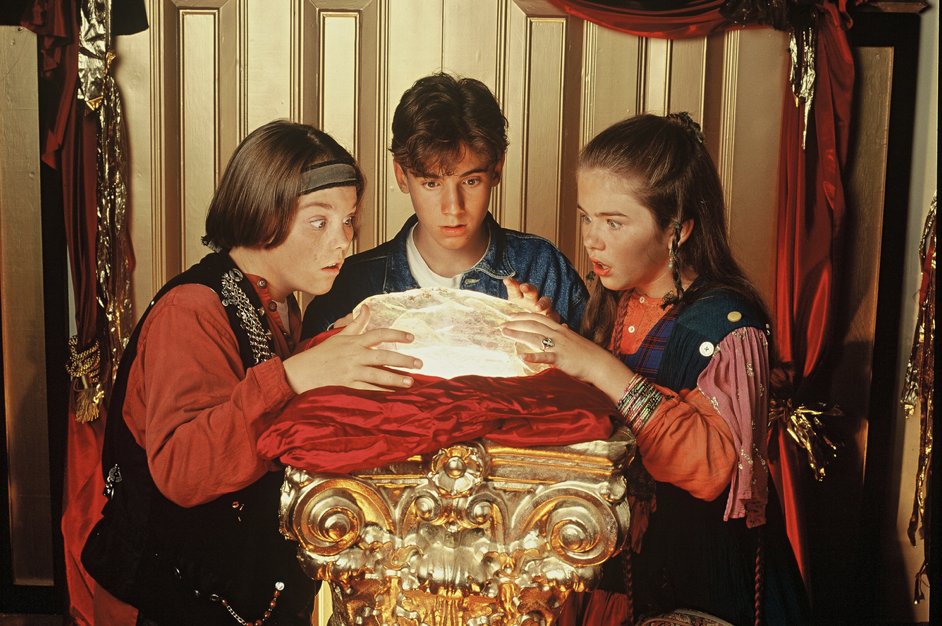As the first season of The Odyssey completed its seminal run on CBC in January 1993, the numbers were more than impressed enough to guarantee a second season, but not without some major adjustments. Show creators Paul Vitols and Warren Easton had been more or less the entire story department despite officially only being contract writers. Before a second run of episodes could get underway, the new regime at CBC would demand a more experienced voice at the helm.
“A couple of recent additions to the CBC National Drama Office program had come in,” remembers Easton “and I think that they felt that they really wanted to put their mark upon the current roster of projects.”
“They felt that it was too unresolved at the end of that first season.” adds Vitols “But to us it seemed clear that we couldn’t wake him up out of the coma. Anyways, these people were approving the scripts as they went into production.”
“What happened was that CBC wanted a more typical way of having a show run with a creative showrunner.” says Executive Producer Michael Chechik. “Somebody in charge, somebody more experienced. They eventually told me that unless we have this showrunner, that this series will not continue. So I was faced with a dilemma. I was loyal to Paul and Warren, but I realized that the series might not go (on). I didn’t want to take the chance.”
That somebody turned out to be Charles “Chuck” Lazer. Having already cut his teeth on such CBC fare as Danger Bay and Max Glick, Lazer was more than prepared to take on the task of piloting CBC’s latest family hit.
“When I came in, my task was to find a way to give the show legs, a reason to run for two more years or with any luck, five.” says Lazer. “ I looked at the thirteen episodes that had aired and it occurred to me that there was a lie in the story and it wasn’t tracking fully and logically. Once I get there, who is the most interesting character who could be telling that lie? It’s obviously Jay. And what’s the biggest lie he can tell? That he knows his father is still alive. That’s why he’s in the coma because he doesn’t want to have to deal with that.”
This line of thinking set the new goal for the second season of The Odyssey: finding out the truth of what in fact happened to Jay’s father, Brad Ziegler who had presumably drowned on a father-son fishing trip when Jay was 7 years-old. The character had only appeared fleetingly in Season One, but for this round would be given a face in the form of future X-Files and Smallville alumnus Robert Wisden. At first appearing exclusively in flashbacks concerning his alleged boating accident, the character would grow in importance as the season progressed, but first there was the matter of the “other” Brad.
Having proven to be a let down in the previous season’s finale, Brad Ziegler’s younger doppelganger and Downworld’s former ruler Brad played by Austin Basile would have to be written out. “We didn’t want him because that character would clog up the rest of the story.” says Lazer. “I wanted it to be a story about Jay.” Early in the season, Brad would suddenly “turn sixteen”, a milestone unheard of in Downword and promptly exit stage left.
“I was sad.” recalls Basile who has since traded acting for a career in VFX. “It was the end of my journey and it had only just started. Finding a motivation for the scene wasn’t that difficult, all I had to do was show the emotions I was feeling.”
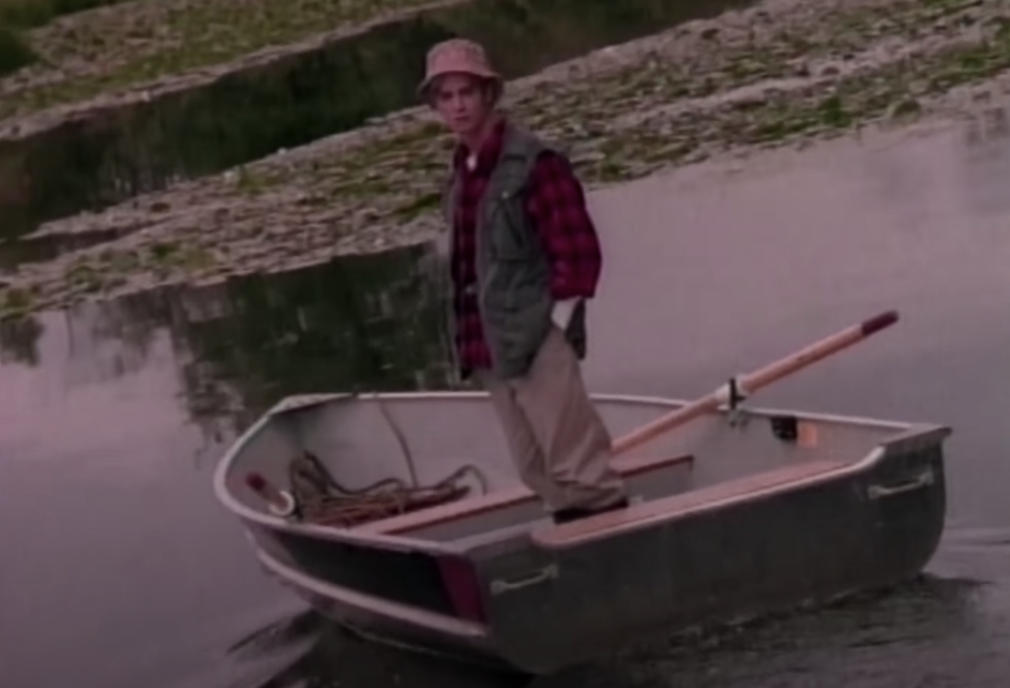
Young Brad (Austin Basile) ages out of Downworld and the show.
With a general direction set, Lazer would populate this season with a brand new slate of writers including himself, Brad Wright, Dennis Foon, Jim Makichuk, Gary Fisher and future Bones creator Hart Hanson who had helped on several scripts the season before.
“Story departments can get really big.” remembers Story Department Coordinator James Tichenor. “If you have a show that has a big alternate world, the Story Department Coordinator is in charge of keeping the continuity of the world and a certain amount of mythology in the show could be tracked by that person. I was the guy doing most of the script revisions and distributing to crew and keeping all the revisions aligned.”
Vitols and Easton themselves would ultimately pen two episodes: To the Lighthouse and Tick Tock before learning their services were no longer required.
“We were fired off of our second episode.” Vitols recalls. “I think a big problem in Season One was that we weren’t perceived as being obedient to Toronto. We didn’t report to anybody and they didn’t automatically have their wishes respected. We did have one or two meetings with Chuck Lazer, the new story editor, but his method of working was so totally different from ours and antithetical to it.”
“It’s always something that makes me very sad what happened to Paul and Warren.” says Chechik. “They were great guys and they had their own unique vision. They created it all.”
The second season opens with series leads Jay (Illya Woloshyn), Alpha (Ashley Rogers) and Flash (Tony Sampson) enroute to their new destination, a lighthouse that might prove to be Jay’s ticket home. But even in those early episodes, Jay becomes ever more haunted by the spectre of his missing father and whether or not he may actually be dead.
Instead of a season-long trek, the trio reach the lighthouse by the end of the second episode and by the third, a shocking event occurred that would reverberate across the remainder of the series: Jay waking up from his coma after encountering a crystalline portal within the lighthouse lamp.
“(CBC) were always troubled that we had a young protagonist laying in bed (in a coma) half the time.” says Chechik. “That was always big problem for them, so we decided we’d better wake him up.”
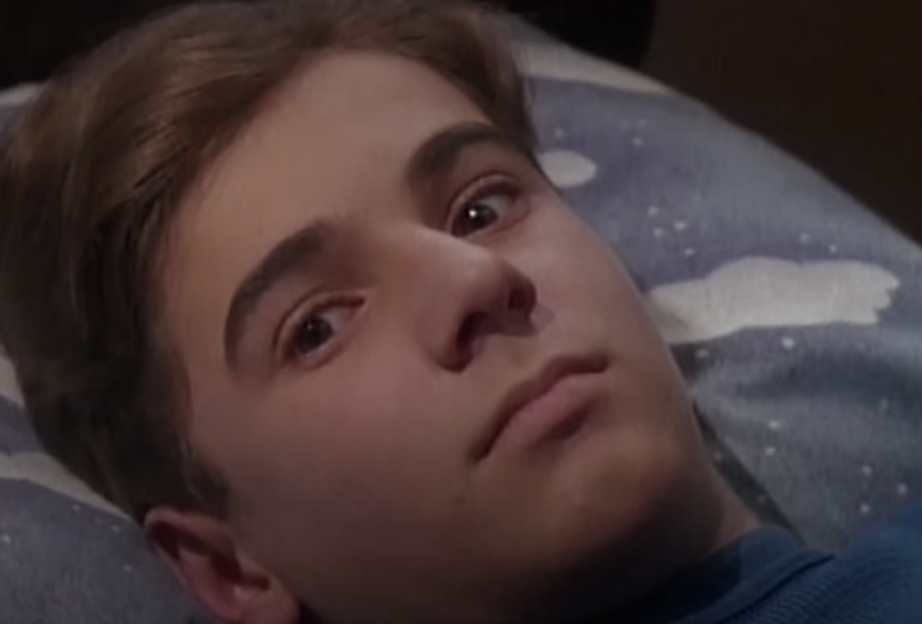
After nearly two years, Jay (Illya Woloshyn) finally awakens from his coma.
Well…almost. Through a variety of means and story devices, Jay would make several trips between the subconscious Downworld and the waking Upworld. But the unfinished business of his father would always drag him back.
As Jay haphazardly follows various breadcrumb trails leading to his father’s whereabouts in Downworld, Upworld finds his mother Val (Janet Hodgkinson) wrestling with the question of whether her husband is really dead after five years despite no body being found. She decides to have Brad declared legally dead in order to collect on a life insurance policy that will give her the financial stability allow Jay to stay in treatment.
Assisting her in the legal challenge against the insurance company is lawyer Arthur (Garwin Sanford) who also takes a more personal interest in his client after hours. Neither of these developments sit well with Jay who alone knows his father is still alive as the memory of that fateful father-son fishing trip slowly begins to reassemble.
With the new batch of scripts in place, production proceeded in summer of 1993. Once again puberty had hit the cast, particularly Woloshyn whose height had soared as much as his voice had dropped.
The kids of The Odyssey were growing and so was the show’s budget which now sat at $435,000 per episode. “Things on Season 2 seemed more grand.” observes Devon Sawa, who reprised his role as Yudo for two episodes. “Sets felt bigger, more background actors, like they’d stepped it up a couple notches.”
Previously a nigh-unreachable spectre in the previous season, the Tower would now play a key role throughout this time around as “Macho-Supremo” leader Macro (Ryan Reynolds) struggles with maintaining power as he realizes being leader involves being more than a pretty face on TV. Lurking in the shadows is Head Monitor Finger (Mark Hildreth) who slowly grows weary of the ineffectual figurehead he is forced to serve under.
“We were all pretty tight.” Fractal actor Jeremy Radick recalls. “Because of the way our scenes were structured, I became very close with Andrea Nemeth (Medea), Mark Hildreth (Finger), and Ryan Reynolds (Macro). We were a little unit of Tower people.”
As Fractal and his theories to unravel the mysteries of Jay’s place in Downworld continued to figure into storylines, the writers would occasionally have some fun at the actor’s expense. “In one ep, (Whispers Like Thunder) I had this monster of a speech about the scientific method where I had to ramble on about ‘hypothesis, synthesis, and antithesis’ a bunch of times.” says Radick. “The director, Steve Scaini, said to me in front of everyone, ‘Radick, if you do this in one take, I’ll buy you a car.’ On the day, I’m sad to say I nearly got through it, but muffed on the last section. There was applause, and Steve was very relieved. He told me that the writers would often give me the most complicated technobabble to see if it would every trip me up, and that was one time they wanted to see how bad they could make it for me!”
Out of this Tower unit, it would be Medea who would leave the most lasting mark on the season. Long an adversary of Jay, the enchantress would have a change of heart once she realizes that that Jay only functions as Downworld’s “wrecker” when he leaves their midst, causing earthquakes and social unrest. With Jay more interested in finding his dad than returning home, a growing bond between the two leads Medea to disclose that she know’s where Brad Ziegler might be.
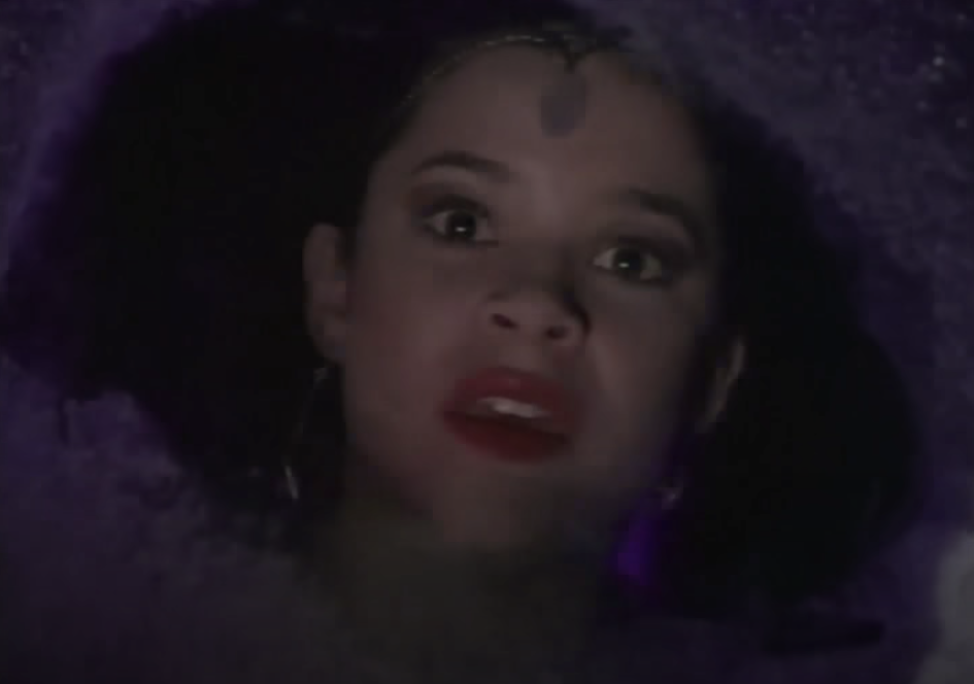
Medea (Andrea Nemeth) peers through a portal to Upworld.
It turns out that there were adults in Downworld all along, only they exclusively reside on the other side of “The Wall”, a structure of such scale as to have made both Nikita Krushchev and Donald Trump blush.
Jay and friends (now including Medea) pursue Brad to the other side of the Wall, having to pass as grown-ups themselves (albeit highly stereotyped versions) to gain access. But complicating their sojourn is brutal enforcer Iceface, likely the most frightening character to grace the series (at least for this author as a child). That horrifying mug just happens to be Garwin Sanford in the latter half of a dual role, a notion lost on this author as I failed to spot him under the makeup even as an adult.
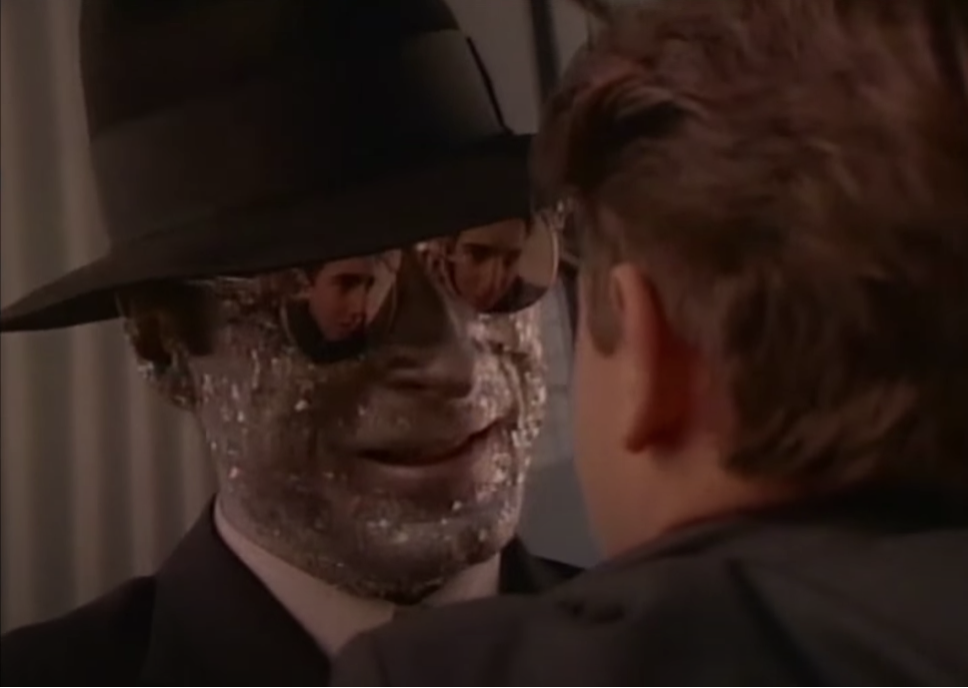
Arguably the series’ most chilling villain, Iceface (Garwin Sanford) confronts Jay.
As Jay finally manages to pin down his father in Downworld, the genuine article suddenly appears in Upworld confirming Jay’s suspicions all along. As he finally tells his son the truth after five years in the shadows, a reckoning on Jay’s future in Downworld is at hand.

The spy who came in from the void, Brad Ziegler (Robert Wisden).
Cutting all these storylines together in post were alternating Editors Jane Morrison and first season veteran Brad Rines. “(The show) posted at the now-defunct Post-Haste on Homer St.” says Rines as he describes the show’s editing workflow which used an early version of Avid. “The show was shot on 16mm film and processed each day after wrap at the Alpha Cine lab which was on Davie St. The negative would be transferred via flying spot scanner to 1-inch master tapes at Post-Haste, dubs to ¾-inch work tapes and VHS viewing copies would be made. The assistant would load the footage from the ¾-inch tapes in real-time into the editing systems in the morning.”
In a pre-internet age, sharing episodes for review and notes still required physical media. “When the show was ready for output,” Rines continues, “it had to be played out in real-time onto ¾-inch tapes and dubbed in real-time to VHS viewing copies. If there were any notes to go with the cut, we would create and print a Word document using timecode reference to indicate where visual effects, ADR, etc would be placed. A locked show required real-time playouts and EDLs for picture and sound. Picture would be mastered from the 1-inch tapes and colour-correction would follow.”
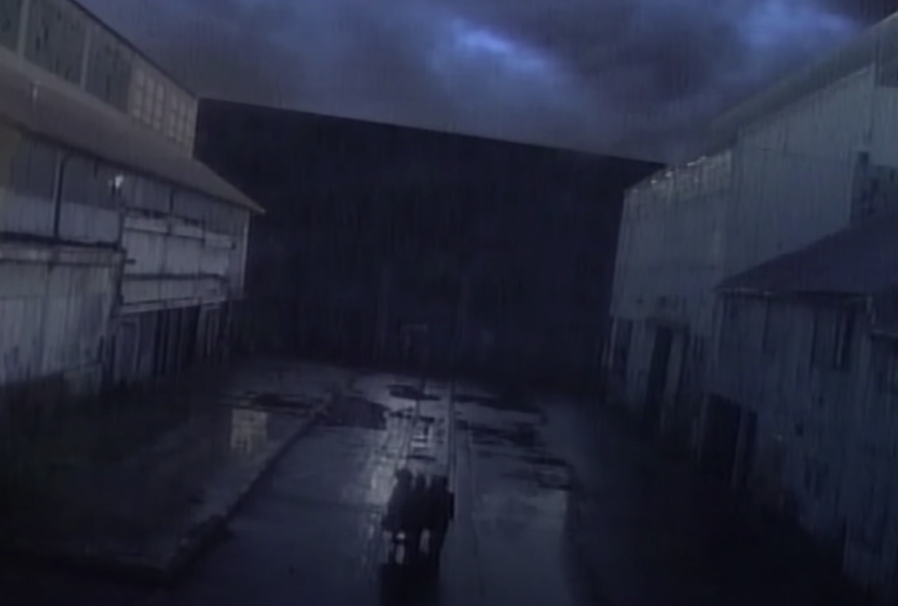
“The Wall” looms large over the series and it’s characters going into Season Three.
Delayed until midseason, Season Two of The Odyssey finally aired on CBC from January 24 to April 18, 1994. The numbers were again high enough to ensure another season, but for this go-around, the show would have to evolve. It did this by instituting its most controversial story change: bring Jay out of his coma for good and split his consciousness between both Down and Upworlds. Neither plane of consciousness would ever be the same.
NEXT WEEK: The Odyssey matures as it charts a darker path to its conclusion.
The Odyssey: Season Two can be viewed on the Encore+ YouTube channel HERE

